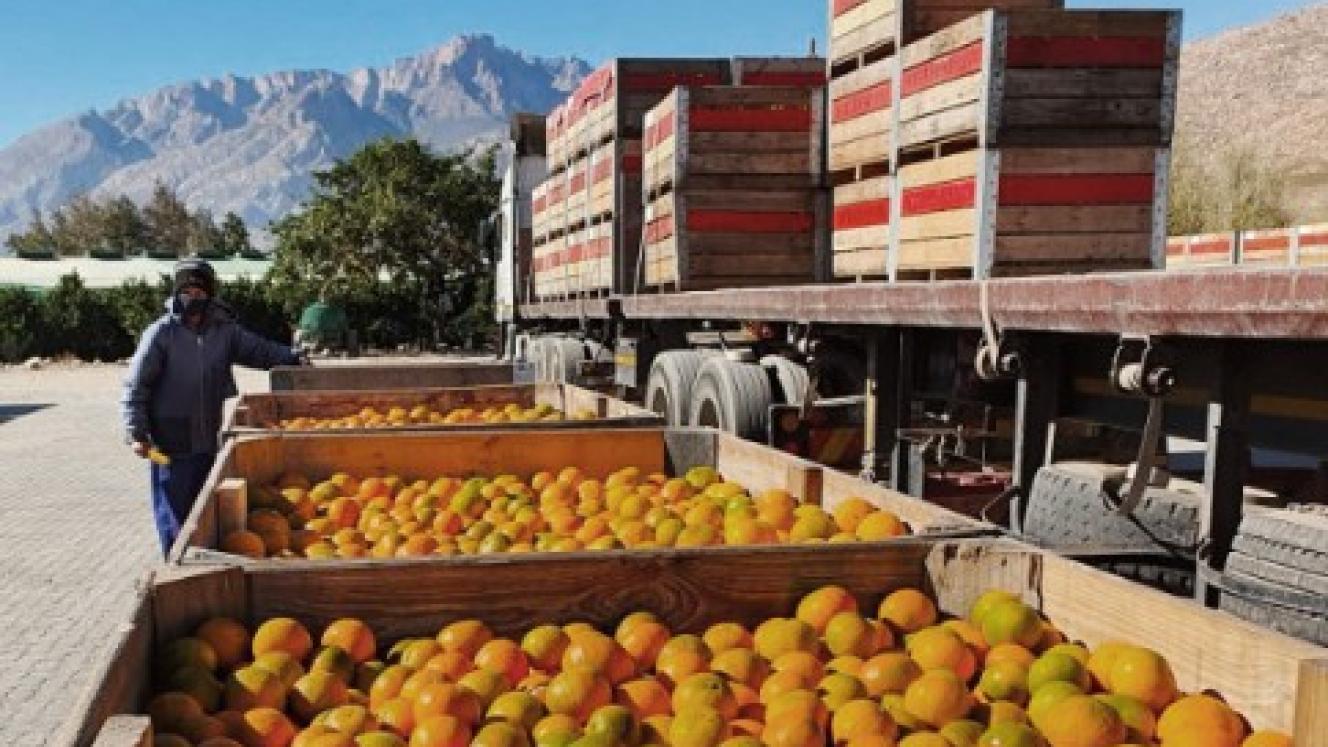In the 2025 export season, southern African citrus growers packed 203.4 million 15kg cartons of fruit for delivery to global markets.
This is according to the latest data released by the Citrus Growers' Association of Southern Africa (CGSA), which noted that the number of actual packed exports were 19% higher than the original estimate of 171.2 million cartons in April. Packed exports were up 22% compared with 2024.
CGA CEO, Boitshoko Ntshabele, attributed the growth to a combination of favourable weather conditions in the growing regions and the many young trees that came into fruit this season.
He said unforeseen factors that contributed to the record-breaking performance included:
- Exceptional demand in overseas markets for processing-grade juicing oranges and juicing lemons.
- An early end to Northern hemisphere supply, which drove strong demand and extended the supply window by adding important sales weeks at the beginning of the South African citrus season.
- Enhanced production efficiencies on farm level relating to water usage and pest management, as well as an increased proportion of hectares under nets.
- Improved logistics efficiency, especially port efficiency, was achieved by Transnet, largely through investments in new equipment and the introduction of employee incentives linked to productivity.
Ntshabele added that there had been a high level of effective co-operation by all logistics players, including shipping lines, resulting in a productive logistics eco-system.
“The 2025 citrus export volume is slightly ahead of the industry’s long-term projection model but should be seen in the context of the Vision 260 growth strategy of the CGA.
“This strategy focuses on key deliverables across the entire supply and value chain that, if achieved, will enable the production and profitable exporting of 260 million cartons by 2032, thus creating an additional 100 000 jobs and contributing significant foreign currency earnings to the SA economy.”
However, he said there were challenges to growth.
"Volume is just one single measure with which to assess an industry. Our growers continue to face challenges, including unpredictable price and market dynamics, rising input costs, as well as market access issues such as high tariffs and unscientific plant health measures.”
He said the imposition of a 30% tariff by the United States on citrus from South Africa had had a limited impact on the industry this season. This was because the tariffs came into effect towards the end of the local season.
Growers in the Western and Northern Cape – the only two provinces that export to the United States – were also able to increase and fast-track shipments to the US before the tariff deadline.
"We remain very worried about the impact of the 30% tariff on the coming 2026 season. That is why a mutually beneficial trade deal between the United States and South Africa must be finalised urgently," said Ntshabele.
He said a tariff exemption for citrus, or all seasonal fresh produce, made sense, as the import of citrus sustained off-season consumption in the US and avoided unnecessary inflation.
“It is imperative that the government actively pursues improved market access in China, India, Japan, South Korea, the European Union and the United States. These markets represent real growth opportunities for South African citrus, which is globally recognised for its quality and taste," said Gerrit van der Merwe, the Chairperson of the CGA.
The final packed figures for 2025 are as follows:
• 15.3 million cartons of grapefruit, which was also the initial estimate in April and a 7% increase from the 2024 season.
• 53.5 million cartons of mandarins, representing a 28% increase from the previous season and a 19% increase from the April estimate.
• 41.3 million cartons of lemons. This is 26% more than the original estimate and a 19% increase from 2024.
• Navel orange exports rose 25% compared with 2024. This year's 31.5 million cartons represent a 21% increase from the original estimate for the season.
• A total of 61.8 million cartons of valencia oranges, up from the 52 million estimated in April and 48.7 million cartons in 2024.













